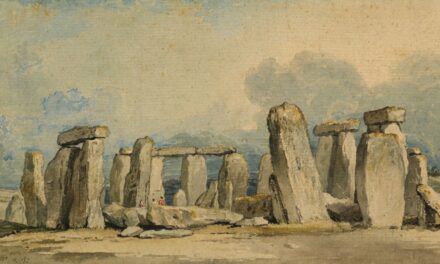Byzantine art originated in the Eastern Roman Empire, which became known as the Byzantine Empire following the fall of Rome in 476 CE. Christianity, as the official religion of the Byzantine state, heavily influenced the artistic output of the period. The art also incorporated elements from surrounding cultures in the Middle East and North Africa, reflecting the diverse nature of the Byzantine Empire.
The early Byzantine period, spanning the 4th to 7th centuries, saw a convergence of Roman, Hellenistic and Eastern artistic traditions. Religious themes dominated, with a focus on biblical scenes and figures. Mosaics and frescoes emerged as prominent techniques, becoming hallmarks of Byzantine art.
The lavish use of gold and vivid colours in these works mirrored the splendour of the Byzantine Empire. As the empire evolved, so did its artistic expression, resulting in the development of a distinctive Byzantine style. This unique aesthetic would continue to influence art throughout the empire’s history and beyond its borders.
Summary
- Byzantine art originated in the Eastern Roman Empire, with influences from Greek, Roman, and Eastern traditions.
- Characteristics of Byzantine art include a focus on religious subjects, use of gold backgrounds, and stylized figures with elongated proportions.
- Religion had a significant influence on Byzantine art, with a focus on depicting religious figures and scenes to convey spiritual messages.
- Mosaics were a key element of Byzantine art, used to decorate churches and convey religious narratives through intricate and detailed designs.
- Byzantine iconography and symbolism played a crucial role in conveying religious teachings and beliefs through the use of specific symbols and visual representations.
- The legacy of Byzantine art can be seen in the influence it had on later artistic traditions, particularly in the Eastern Orthodox Church and the development of religious art.
- Famous Byzantine artworks include the Hagia Sophia mosaics, the icon of the Virgin Hodegetria, and the San Vitale mosaics in Ravenna, Italy.
Characteristics of Byzantine Art
The Opulence of the Byzantine Empire
One of the most notable characteristics of Byzantine art is its use of gold and vibrant colours, which were used to create rich and luxurious artworks that reflected the opulence of the Byzantine Empire. The use of mosaics and frescoes was also a defining feature of Byzantine art, with these techniques being used to decorate churches, palaces, and other important buildings throughout the empire.
Spirituality and the Divine
Another key characteristic of Byzantine art is its emphasis on spirituality and the divine. Religious figures and scenes from the Bible were commonly depicted in Byzantine art, with a particular focus on conveying a sense of transcendence and otherworldliness. This is reflected in the stylised and idealised depictions of figures, as well as the use of symbolism to convey deeper spiritual meanings.
The Language of Symbolism
The use of symbolism was also a defining feature of Byzantine art, with certain colours, gestures, and objects being used to convey specific religious or spiritual messages.
The Influence of Religion on Byzantine Art
Religion played a central role in shaping Byzantine art, as the Byzantine Empire was one of the first states to adopt Christianity as its official religion. This had a profound impact on the art of the period, as religious themes became a central focus of artistic expression. The use of religious imagery in Byzantine art served not only to decorate churches and other important buildings but also to convey important religious messages to the faithful.
The depictions of religious figures and scenes from the Bible were intended to inspire devotion and piety among believers. The influence of religion on Byzantine art can also be seen in the use of symbolism to convey deeper spiritual meanings. Certain colours, gestures, and objects were used to convey specific religious or spiritual messages, allowing artists to imbue their works with layers of meaning that went beyond mere decoration.
This use of symbolism served to reinforce the spiritual significance of Byzantine art and to create a sense of otherworldliness that was intended to inspire awe and reverence in the viewer.
The Importance of Mosaics in Byzantine Art
Mosaics played a crucial role in Byzantine art, with their use becoming widespread during the early period of the empire. Mosaics were used to decorate churches, palaces, and other important buildings throughout the empire, serving as a means of conveying important religious messages and creating a sense of grandeur and opulence. The use of gold and vibrant colours in these mosaics reflected the wealth and power of the Byzantine Empire, while also creating a sense of transcendence and otherworldliness that was intended to inspire awe in the viewer.
The importance of mosaics in Byzantine art can also be seen in their durability and longevity. Many Byzantine mosaics have survived to this day, providing valuable insights into the artistic and religious practices of the period. These mosaics serve as important historical and cultural artifacts, offering a window into the world of the Byzantine Empire and its artistic achievements.
The intricate designs and meticulous craftsmanship of these mosaics also reflect the skill and expertise of Byzantine artists, who were able to create stunning works of art that have stood the test of time.
Byzantine Iconography and Symbolism
Byzantine art is renowned for its use of iconography and symbolism, which played a crucial role in conveying important religious messages and creating a sense of spirituality and transcendence. Iconography refers to the use of religious images or icons to convey specific religious meanings, with each figure or object carrying deep spiritual significance. These icons were used not only for decoration but also as objects of veneration and devotion, with believers often praying before them or using them as aids to meditation.
Symbolism also played a central role in Byzantine art, with certain colours, gestures, and objects being used to convey specific religious or spiritual messages. For example, gold was often used to represent divine light or the glory of heaven, while certain hand gestures were used to convey specific blessings or prayers. The use of symbolism allowed Byzantine artists to imbue their works with layers of meaning that went beyond mere decoration, creating artworks that were rich in spiritual significance and intended to inspire awe and reverence in the viewer.
The Legacy of Byzantine Art

Influence Across Europe and Beyond
The legacy of Byzantine art is far-reaching and enduring, with its influence being felt across Europe and beyond. The distinctive style and techniques developed by Byzantine artists would go on to shape the artistic traditions of many cultures, leaving a lasting impact on the history of art. The use of mosaics and frescoes, as well as the emphasis on religious themes and symbolism, would become defining features of medieval and Renaissance art, with artists drawing inspiration from Byzantine traditions.
A Lasting Impact on Religious Art
The legacy of Byzantine art can also be seen in its impact on religious practices and beliefs. The use of religious imagery and symbolism in Byzantine art served not only to decorate churches but also to convey important religious messages to believers. This tradition would continue to influence religious art for centuries to come, with artists using similar techniques to create works that inspired devotion and piety among believers.
A Timeless Tradition
Byzantine art’s influence can still be seen in modern times, with its unique style and techniques continuing to inspire artists and art lovers alike. As a testament to its enduring legacy, Byzantine art remains an integral part of art history, a reminder of the power of art to transcend time and culture.
Famous Byzantine Artworks
The Byzantine Empire produced many famous artworks that are still celebrated for their beauty and significance today. One such example is the Hagia Sophia in Istanbul, Turkey, which is renowned for its stunning mosaics and frescoes that adorn its interior. These artworks depict religious figures and scenes from the Bible, conveying important religious messages while also creating a sense of grandeur and opulence that reflects the power and wealth of the Byzantine Empire.
Another famous example of Byzantine art is the mosaics at the Basilica di San Vitale in Ravenna, Italy. These mosaics are celebrated for their intricate designs and vibrant colours, which create a sense of transcendence and otherworldliness that is characteristic of Byzantine art. The mosaics at San Vitale depict religious figures such as Christ, Mary, and various saints, conveying important religious messages while also serving as objects of veneration and devotion for believers.
In conclusion, Byzantine art is a rich and diverse tradition that reflects the cultural, religious, and artistic achievements of the Byzantine Empire. Its distinctive style, emphasis on religious themes and symbolism, as well as its enduring legacy have left an indelible mark on the history of art and continue to inspire artists and viewers alike.
If you are interested in learning more about different art movements, you may want to check out an article on Impressionism. This art movement, which emerged in the 19th century, focused on capturing the fleeting effects of light and atmosphere in their paintings. Impressionist artists such as Claude Monet and Edgar Degas used loose brushwork and vibrant colours to create their works, which marked a departure from the more traditional styles of art that came before. Understanding Impressionism can provide valuable context for appreciating the development of Byzantine art and its unique characteristics.
FAQs
What is Byzantine art?
Byzantine art refers to the art produced in the Byzantine Empire from the 4th to the 15th century. It is characterized by its religious subject matter, use of gold and rich colors, and a focus on spiritual symbolism.
What are the main characteristics of Byzantine art?
Some of the main characteristics of Byzantine art include its emphasis on religious themes, use of gold and rich colors, flat and two-dimensional figures, and a focus on spiritual symbolism rather than naturalism.
What are some examples of Byzantine art?
Examples of Byzantine art include mosaics, icons, frescoes, illuminated manuscripts, and religious architecture such as churches and monasteries.
What was the significance of Byzantine art?
Byzantine art played a significant role in the spread of Christianity and the visual representation of religious beliefs. It also influenced the art of the medieval and Renaissance periods in Europe.
How did Byzantine art influence other cultures?
Byzantine art had a significant influence on the art and architecture of the medieval and Renaissance periods in Europe, as well as on the art of the Orthodox Christian world and the Islamic world. Its use of religious symbolism and decorative motifs had a lasting impact on art history.




